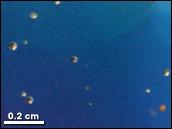
Originally Posted by
Lotz-A-Landies

The problem with this scenario is that most of our current coal fired power stations are above ground and a long way away from unproductive coal seams. ....

Not as hard as you might think - for example, in the Sydney basin, there are two distinct sets of coal measures. Both are pretty much continuous across the basin (roughly from the Hunter to Wollongong and west to Lithgow, bordered in the east by the continental margin a few tens of kilometres out to sea. The coal is (economically) mineable only round the edges - were you aware that there used to be a coal mine at Balmain? This was put out of business by the construction of a rail bridge across the Hawkesbury - 100 miles horizontal haulage was cheaper than one mile vertically! All of these coal measures are accessible by drilling using well established (oilfield) techniques, and could be used for underground gasification.
Similarly, virtually all of Bass Strait is underlain by thick coal measures, and the same applies to the majority of the great Artesian and Bowen basins. Australia literally has no shortage of coal, and even readily and economically mineable coal is not likely to be in short supply for hundreds of years even at the present rate of increase of mining.
However, I remain unconvinced that underground gasification involves less CO2 emissions than mining the coal and burning it in a power station. It is a simple matter of looking at the energy balance - if you burn it, you use (at least potentially) all the available energy from oxidation of the coal. If you use underground gasification, part of the energy is lost in this process, and this is reflected in the fact that a major product of the gasification is CO - oxidation of which provides less energy than you would get if you oxidised the carbon in a power plant, but the end amount of CO2 is the same as if you had done that. The only CO2 saving I can see is that which is generated by the actual mining and transport of the coal - and I would have to be convinced that this saving is greater than the energy wasted underground in the gasification.
John
John
JDNSW
1986 110 County 3.9 diesel
1970 2a 109 2.25 petrol





 Reply With Quote
Reply With Quote



Bookmarks